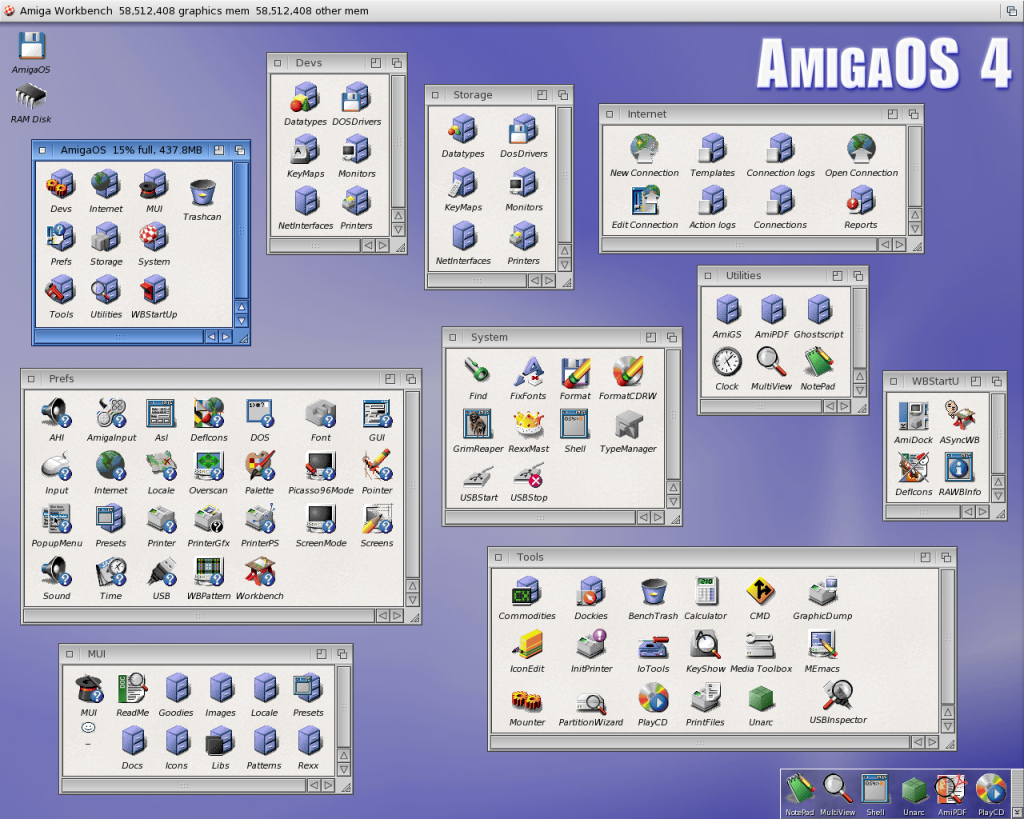

News source: Hyperion Entertainment / image source: GenerationAmiga / purchase AmigaOS 3. As far as the evolution of the GUI goes, Workbench was well and truly ahead of its time, with things such as a recycle bin, proper animated menus, multi-state icons, stereo sound, left-click and right-click menus and the ability to launch more than one application at a time. Early names used for the Amiga operating system included CAOS and AmigaDOS. After the kickstart was loaded into a special section of memory called the writable control store, the image of the hand appeared again, this time inviting the user to insert the Workbench disk. An image of a simple illustration of a hand on a white screen, holding a blue Kickstart floppy, invited the user to perform this operation. The Amiga 1000 needed a Kickstart disk to be inserted into floppy drive to boot up. Hello, I found this post and like to run Amiga OS 4.1 on my PC - I downloaded the files from the links you provided, run the Amiga OS 4.1 in WinUAE and works fine, except for the resolution - It is by default in 'Productivity' and very low resolution and lacks the UAE screenmodes to use PC high resolutions like 1366 x 768 16 bits as an example - I also installed Clanto Amiga Forever 7, but don. Initially the Amiga operating system had no strong name and branding, as it was simply considered an integral part of the Amiga system as a whole. You can use you physical AmigaOS 4.1 FE disc (e.g. Click on Add SCSI/IDE CD Drive and change the HD Controller to Accelerator (CyberStorm PPC) and the ID to 1.

Workbench, together with its OS component Kickstart, would later be rebranded to AmigaOS. Insert the bootfloppy.adf disk image from the Amiga OS 4.1 CD FE disk in DF0: 6. Now copy the files 'siliconmotion502.chip' and 'PCIGraphics.card' to your AmigaOS 4.1 FE Pegasos2InstallCD.ISO with the help of UltraIso into the directory /System/Kickstart. In 1985 Commodore introduced the Amiga 1000 with Amiga Workbench Version 1.0.


 0 kommentar(er)
0 kommentar(er)
